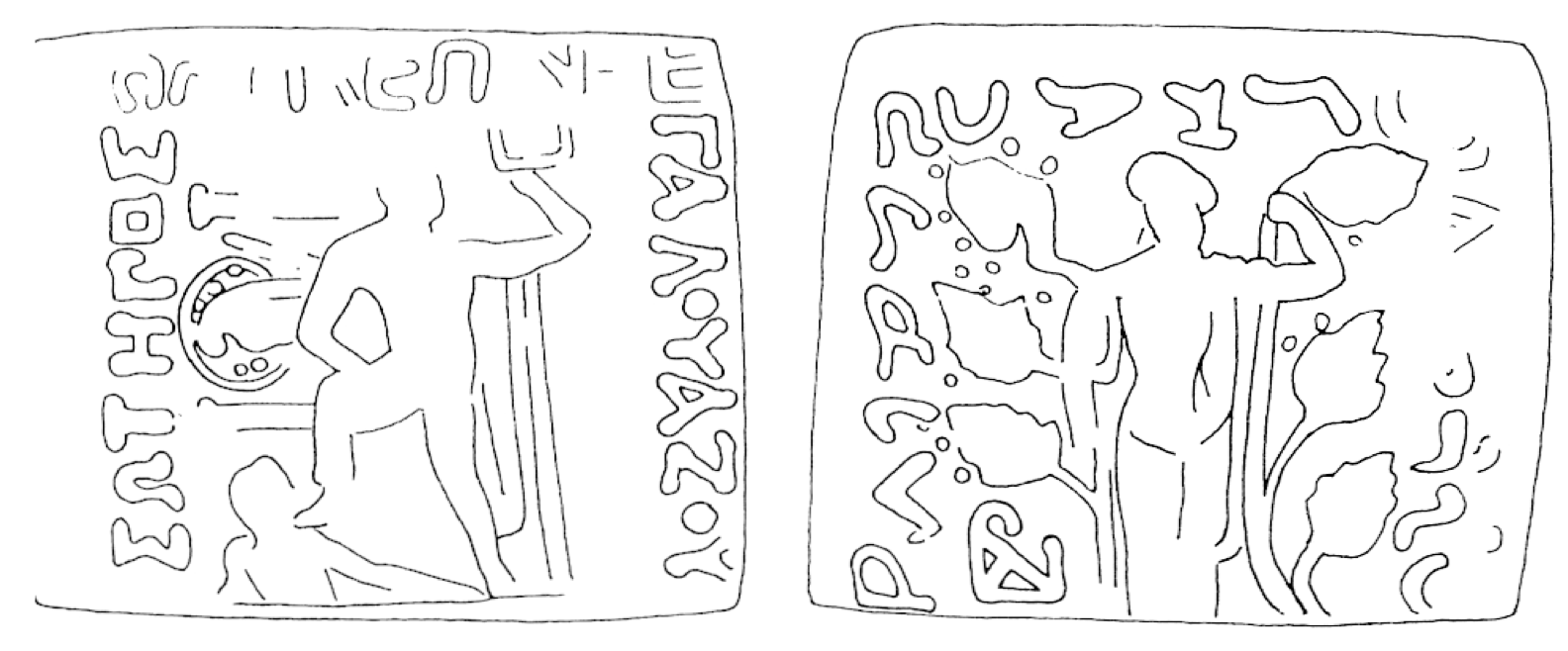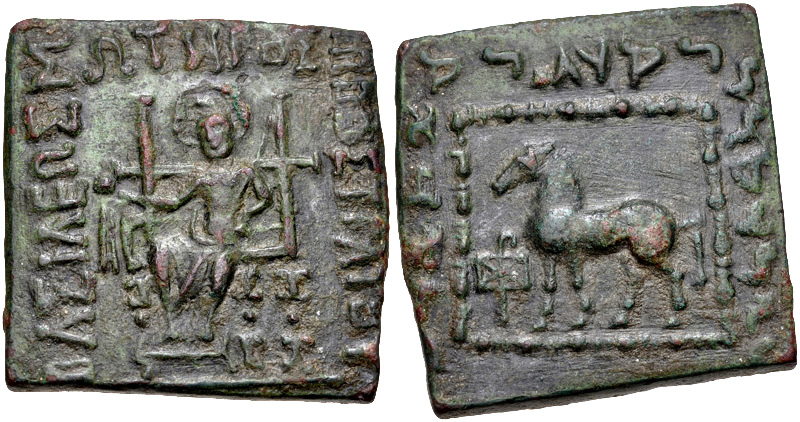58 BCE - 12 BCEΒΑΣΙΛΕΩΣ ΒΑΣΙΛΕΩΝ ΜΕΓΑΛΟΥ ΑΖΟΥ | Maharajasa rajarajasa mahatasa Ayasa (Great King, King of Kings Azes the Great)
Overstriking coin
SO_2122_-_Gandhara-Punjab_(uncertain_mint)_(Azes_I)_(AE_Poseidon-Yakshi).png
Overstruck variety
Hippostratos_Zeus-horse.jpeg
[1]
Description
| ObverseInscription or printing placed on the obverse.:
|
ΒΑΣΙΛΕΩΣ ΒΑΣΙΛΕΩΝ ΜΕΓΑΛΟΥ ΑΖΟΥ (Greek) Poseidon facing, one foot on divinity (river god), holding trident
|
ReverseInscription or printing placed on the reverse.:
|
Maharajasa rajarajasa mahatasa Ayasa (Great King, King of Kings Azes the Great) (Kharoshthi) Yakshi facing, holding sceptre. Inbackground, vines. In left field, monogram.
|
Mint and issuing power
Chronology
| FromIdentifies the initial date in a range assigned in a numismatic context. 58 BCE toIdentifies the final date in a range assigned in a numismatic context.. 12 BCE
|
Hellenistic 323-30 BC  periodTime period of the numismatic object. periodTime period of the numismatic object.
|
Physical description
MetalThe physical material (usually metal) from which an object is made.: Bronze 
|
WeightWeight of the numismatic object (in grams). in grams: 11.5211.52 g <br />11,520 mg <br />
|
DenominationTerm indicating the value of a numismatic object. Examples: tetradrachm, chalkous, denarius.: denomination A
|
|
|
|
StandardStandard.: Indian (Hoover)
|
References
| Coin referenceReference of the Coin:
|
Bopearachchi 1989, p. 77, n° 23, pl. VI, Bopearachchi 2008, p. 261, https://www.britishmuseum.org/collection/object/C_1859-0301-82
|
Coin series referenceReference to coin series study:
|
Mitchiner 19751Mitchiner 1975, p. 492, type 740, Senior 20012Senior 2001, vol. 2, p. 31-32, n° 77, HGC 123HGC 12, n° 674
|
Description
| ObverseInscription or printing placed on the obverse.:
|
ΒΑΣΙΛΕΩΣ ΣΩΤΗΡΩΣ ΙΠΠΟΣΤΡΑΤΟΥ (Greek) Zeus-Mithra, seated facing on throne, aureole around head, outstretched right arm (visible on obverse: head of Zeus, legend)
|
ReverseInscription or printing placed on the reverse.:
|
Mahārājasa tratarasa Hipustratasa (of the Great King Hippostratos the Savior) (Kharoshthi) Horse standing left, surrounded by bead and reel border. Monogram to left. (nothing visible on reverse)
|
Mint and issuing power
Chronology
| FromIdentifies the initial date in a range assigned in a numismatic context. 65 BCE toIdentifies the final date in a range assigned in a numismatic context.. 55 BCE
|
Hellenistic 323-30 BC  periodTime period of the numismatic object. periodTime period of the numismatic object.
|
Physical description
| DenominationTerm indicating the value of a numismatic object. Examples: tetradrachm, chalkous, denarius. ᵖ:
|
denomination A
|
StandardStandard. ᵖ:
|
Indian (Hoover)
|
References


